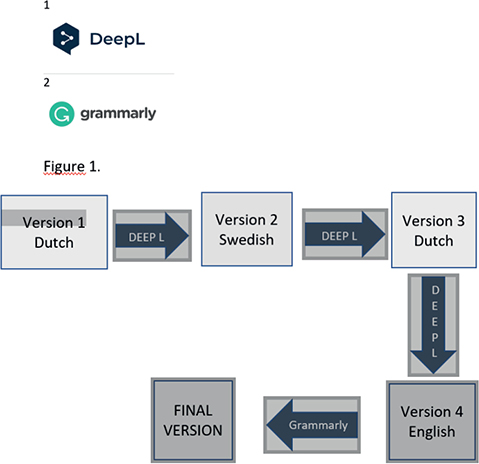EDITORIAL
WRITING IN INTERNATIONAL JOURNALS IS GETTING EASIER
Citation: J Rehabil Med 2024; 56: jrm39905. DOI: https://doi.org/10.2340/jrm.v56.39905.
Copyright: © 2024 The Author(s). Published by MJS Publishing, on behalf of the Foundation for Rehabilitation Information. This is an Open Access article distributed under the terms of the Creative Commons Attribution-NonCommercial 4.0 International License (https://creativecommons.org/licenses/by-nc/4.0/).
Published: Jan 22, 2024.
This editorial was written in Dutch (HS) and then translated into Swedish by a translation programme so that the Editor-in-Chief in Stockholm (KB) could make additions and improvements. This Swedish version was translated into English by the same translation programme (1). A grammar programme was applied to improve the editorial further (2).
The result of these actions is now before you, and you may be surprised to learn that both writers basically did not need to know English to arrive at this result.
Applying translation and correction programmes offers opportunities to solve one of the significant challenges in scholarly publishing: the uneven playing field between native English-speaking authors and authors who grew up in a non-English-speaking country.
Most international research grants must be written and submitted in English. An application not written in perfect English is more likely to receive a slightly lower score than one with the same scientific quality but written in perfect English.
The same phenomenon occurs when submitting articles to academic journals. When assessed by a chief editor or a reviewer, poor grammar may unwillingly play a role in the article’s appreciation and make the difference between immediate rejection or further assessment and revision (and thus the likelihood of final acceptance and publication). An author can now write his article in his native language and, when all authors agree with the final version, translate it into English and send it to an English-language journal. No one will notice that the authors are not native speakers.
Using translation and correction programmes based on machine learning or artificial intelligence has other unexpected applications.
Journal editors can save tremendous costs on language and grammatical corrections to accepted articles.
The Journal of Rehabilitation Medicine has the ambition to increasingly adopt artificial intelligence-based translation and correction programmes to benefit the quality of our publications, mainly by facilitating authors from all countries and all parts of the world.
The editors-in-chief of Journal of Rehabilitation Medicine wholeheartedly recommend using translation programmes and programmes to improve grammar. Writing an article will take less time. The result is of good quality and the chances of acceptance of a submitted article increase significantly.
Henk Stam & Kristian Borg
Editors-in-Chief
